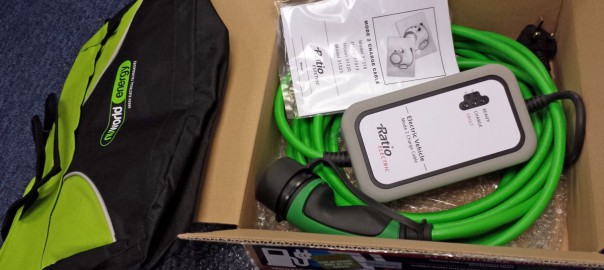The Renault ZOE is unusual amongst electric cars in that it doesn’t come with a 13 Amp home charge lead as standard, a so-called ‘granny cable’. There are two likely reasons for this: firstly, the ZOE’s on-board Chameleon charger is less efficient at lower powers, which is the reason Renault insists on only funding higher power home charge points (32A rather than 16A). Secondly, it’s a simple fact that the ZOE’s 13A lead is rather pricey – at about £500 for the official Renault cable.

I didn’t order one originally with my ZOE and for a long time was rather sceptical of the benefit of it (I guess ‘you can’t miss what you haven’t had’). It takes a long time to charge (8-10 hours), more than twice as long as the home charge point, so I could never see myself getting much use from it. However, bad experiences with using public charge points when away from home, particularly a fateful Christmas Day, changed my mind. I eventually bought one ‘just in case’ and have had some good use out of it when spending long periods with relatives, in particular while visiting parents and in-laws.
I bought mine from nuWorld Energy (trading then as nuCharge, now as ChargedEV). It is a standard Type 2 cable so as well as the ZOE it should fit most non-Japanese (i.e. non-Type 1) electric cars such as the Volkswagen e-Golf, BMW i3, etc. There were two options: 5m long for £372 or 10m for £414. I went with 10m to make it easier to reach a socket when visiting relatives, and also bought a storage bag. They claimed 5 working days for delivery, though I had to wait more than a month for mine due to supplier issues.
The cable turned out to be a Ratio Electric product; it has a Type 2 connector at the car end, a three-pin ‘13A’ plug at the house end, and a waterproofed electronics box a short distance from the house end. It has the flexibility of being able to charge at 6A, 10A or 16A, with the selection made by a button on the side of the electronics box. The cost of this flexibility is that you need to manually set your preferred charge rate (up to the level available from the socket you use). The ZOE appears to start charging at 6A but in fact the battery level never goes up – it needs to be set to at least 10A to work.

This means that sometimes you have to awkwardly plug in at the house end, plug in to the ZOE, then dash back to the house to select the 10A setting before it times out and tries to charge at the default of 6A. Another awkward thing is that the electronics box is rather heavy, so when using any socket a distance off the floor it hangs down and can exert a significant force on the plug.
However, despite these minor issues, it has never failed to charge when connected to a good supply, and I have no regrets about purchasing it. Further, the 10m length option – something not available from most suppliers – has been a godsend. It doesn’t just allow for reaching sockets that might otherwise be unobtainable, but also provides the simple convenience of charging on a drive while parked behind the homeowner’s car (and so not requiring it to be moved out the way).
I have now used the cable a number of times, and I intend to write further about it (and give more details of the rate of charge).
(Update: next part here)

3 thoughts on “Electric Vehicle Home Charge ‘Granny’ Cable”